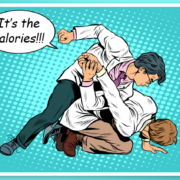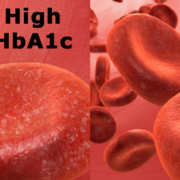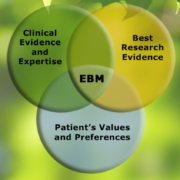Guidelines for Type 2 Diabetes: EBM in Practice
The American College of Physicians (ACP) has established guideline statements for the management of HbA1c in non-pregnant adults using medication. They considered the research behind guidelines set by four other major physician organizations for treating type 2 diabetes. After reviewing that data, they have proposed four guidelines for use when treating patients. These are non binding guidelines; the choice is always left to the physician and the patient. But I think they get back to what evidence-based medicine should have always been about: use the best science and research and work with the patient to see what they want to do. Let’s take a look.
ACP Guideline Statements
These are the statements:
Guidance Statement 1
Clinicians should personalize goals for glycemic control in patients with type 2 diabetes on the basis of a discussion of benefits and harms of pharmacotherapy, patients’ preferences, patients’ general health and life expectancy, treatment burden, and costs of care.
Guidance Statement 2
Clinicians should aim to achieve an HbA1c level between 7% and 8% in most patients with type 2 diabetes.
Guidance Statement 3
Clinicians should consider de-intensifying pharmacologic therapy in patients with type 2 diabetes who achieve HbA1c levels less than 6.5%.
Guidance Statement 4
Clinicians should treat patients with type 2 diabetes to minimize symptoms related to hyperglycemia and avoid targeting an HbA1c level in patients with a life expectancy less than 10 years due to advanced age (80 years or older), residence in a nursing home, or chronic conditions (such as dementia, cancer, end-stage kidney disease, or severe chronic obstructive pulmonary disease or congestive heart failure) because the harms outweigh the benefits in this population.
EBM and Guideline Statements
I think the Guideline Statements reflect what EBM was always supposed to be about: consider the patient and what they want. I have spoken to many adults with type 2 diabetes who become frustrated with their inability to reach the HbA1c goals their physician has set. If they can’t reach it, more medication seems to be the only solution, and that’s not what they want.
I think these guidelines bring the patient or their caregiver into the equation. What price does the patient have to pay with their body? How much will it affect their life positively or negatively? Are there real improvements in quality of life if the HbA1c is 6.5% versus 7.0%? What is the cost of emotional stress?
The new guideline statements are a great addition to a physician’s repertoire: treat the patient as an individual. The patient comes before statistics and hazard ratios.
The Bottom Line
While not all organizations are going to adopt these guidelines, they’re important. There has been significant pushback from other organizations, all suggesting that there are new medications that may prevent some of the negative effects of prior treatment. “New medications”—they’ve learned nothing.
The one opportunity I see is that there’s hope for all of us who want to work at getting control of our lifestyle and reduce the dependence on medications as recommended by statement three. You say you don’t want to take medication? Excellent! Here is your chance to prove it.
Eat less. Eat better. Move more.
What are you prepared to do today?
Dr. Chet
Reference: Ann Intern Med. doi:10.7326/M17-0939.









